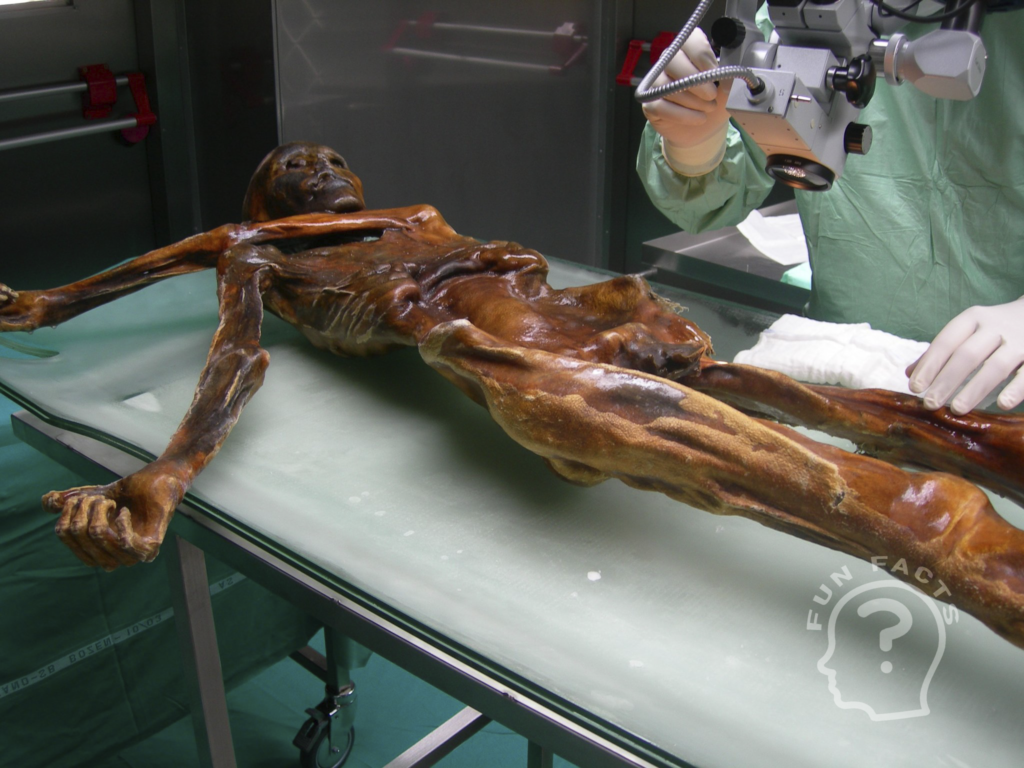Unraveling Ötzi’s History: New Discoveries
Insights into the Life and Death of Ötzi, the Iceman: New Studies Revealed.
Ötzi, also known as the Iceman, is a prehistoric mummy discovered in the Italian Alps in 1991. Since its discovery, scientists have been studying the life and death of this individual, who lived more than 5,000 years ago. Recently, new studies have revealed more information about Ötzi’s history, including details about his diet and health.
The discovery of Ötzi

Ötzi was discovered by chance by a German couple of mountaineers in September 1991. The mummy was frozen in a glacier in the Italian Alps at an altitude of about 3,210 meters. Since then, Ötzi has become one of the most important archaeological specimens in Europe.
Ötzi’s diet
Recently, scientists conducted a new analysis of the food remains found in Ötzi’s stomach. They found that Ötzi’s last meal consisted of deer and wild goat meat, accompanied by spelt grains. In addition, Ötzi also consumed a species of moss, which may have been used to make medicinal tea.
These results suggest that Ötzi was a hunter-gatherer who primarily ate meat and grains. It is interesting to note that despite his diet being rich in animal fat, Ötzi did not show signs of cardiovascular disease, indicating that he was physically active and had a healthy lifestyle.
Ötzi’s health
Another recent discovery about Ötzi is that he had health problems that may have contributed to his death. Previous studies had already identified that Ötzi had a hand injury, a stomach infection, and intestinal parasites. Now, new analyses have revealed that Ötzi also had gallstones.
Gallstones are small stones that form in the gallbladder and can cause pain and inflammation. Although the exact cause of Ötzi’s death is still unknown, gallstones may have contributed to his premature death at the age of 45.
Further studies on Ötzi
Ötzi’s discovery and subsequent studies have captivated the attention of scientists and the general public alike. As a result, further research on this prehistoric man continues to be conducted.
One recent study conducted in 2021 found that Ötzi had a genetic predisposition to heart disease. This finding is surprising, given that Ötzi did not exhibit any signs of cardiovascular disease during his life. However, this genetic predisposition may have contributed to the formation of the gallstones found in his body.
Another area of interest for researchers is the tattoos found on Ötzi’s body. Ötzi had at least 61 tattoos, mostly located on his back, legs, and arms. Recent studies have revealed that these tattoos may have been therapeutic in nature, as they were located on areas of the body that are prone to pain and injury.
Ötzi’s legacy
Ötzi’s discovery has provided invaluable information about prehistoric life, including insights into diet, health, and technology. For example, Ötzi’s clothing and tools have shed light on the technology and materials used during his time. In addition, his genetic analysis has provided new insights into human migration patterns.
Furthermore, Ötzi has become a symbol of the intersection between science and culture. His discovery and subsequent studies have sparked public interest in archaeology and ancient history, making him a cultural icon.
Conclusion
In conclusion, Ötzi continues to be a rich source of information about prehistoric life. Recent studies have provided new insights into his diet, health, and genetic predispositions. Furthermore, researchers continue to be fascinated by his tattoos and the technology and materials used during his time. Ultimately, Ötzi’s legacy as a cultural icon and symbol of scientific inquiry continues to inspire researchers and the general public alike.
Read Also: Meet some of the most famous snipers in history




